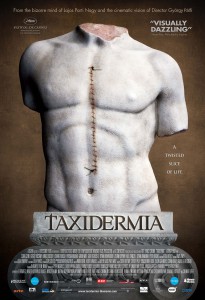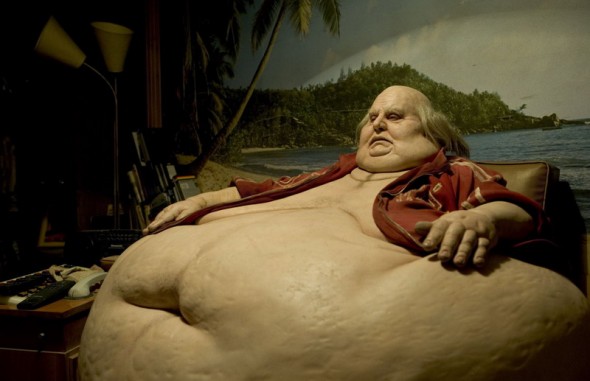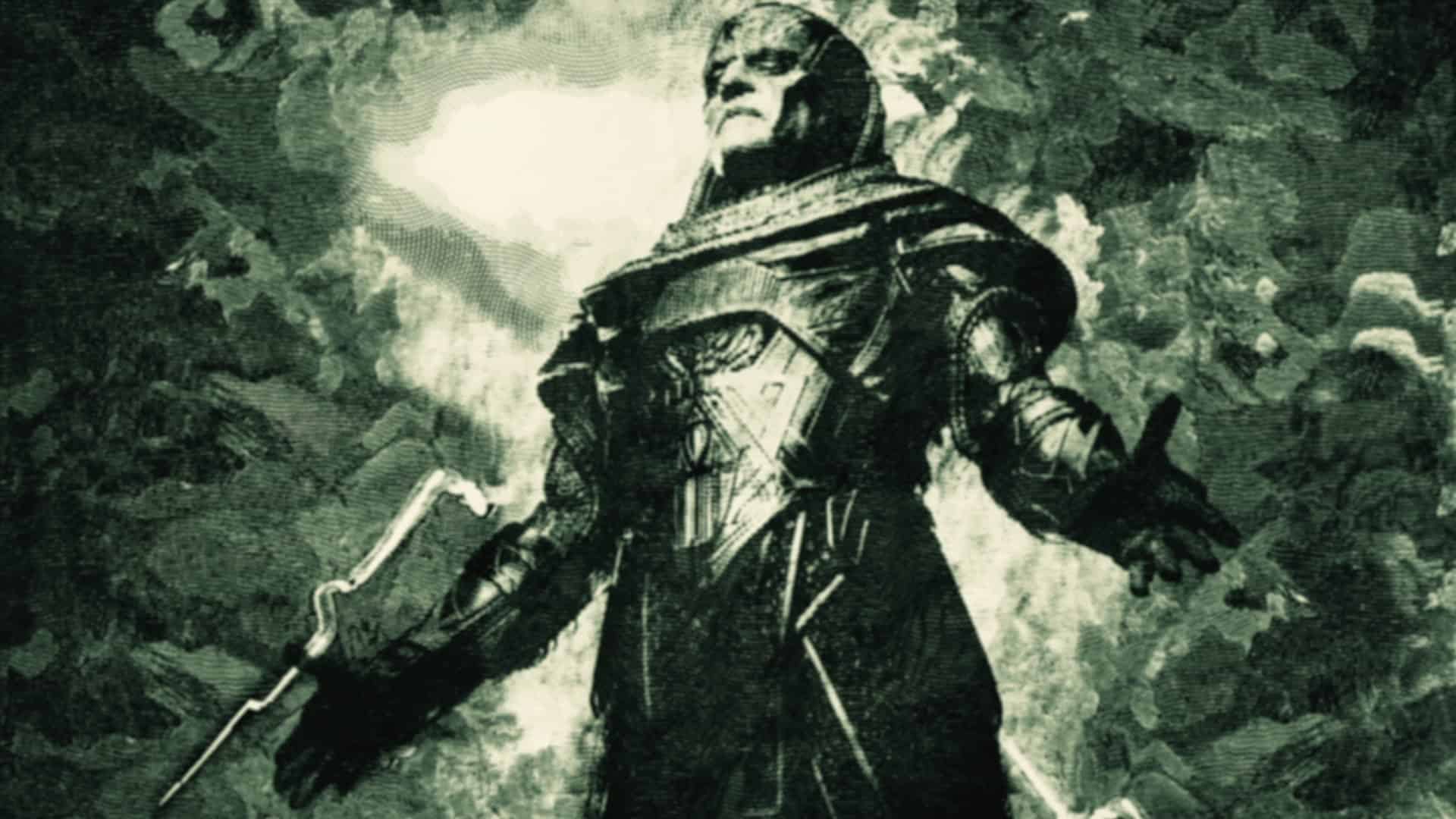Taxidermia
Written by György Pálfi & Zsófia Ruttkay
Directed by György Pálfi
Austria/France/Hungary, 2006
Striking visuals attempt to match allegory; this is the stuff of Taxidermia. From the onset it’s quite clear that Taxidermia isn’t interested in being a typical horror film. The film blends elements of comedy, body horror, and political allegory into as unappealing of a package as possible. That is, however, the reason that Taxidermia is so appealing as a film. The images are often visceral to the extreme, repugnant in the way they depict the characters. People who see Taxidermia will probably never be able to look at competitive eating the same way again. Repugnance is the point of Taxidermia, or rather it is the point that is used to get to the root of the political issues that have plagued Hungary for years.
On their own the three segments in time that comprise Taxidermia appear to mimic the cycle of life. Each segment is about the birth of someone or something, and the eventual death of something or someone. This gives the viewer the effect of understanding the passage of time. The connected nature of the three segments is what moves the film beyond being a simple parable about the cycle of life. Rather, Taxidermia is the story of a country. Its search for an identity, and how it’s past, present, and future are ugly are the roots of the story in Taxidermia.
The segments aren’t strictly tethered to reality because of the way said segments are constructed. They are allegorical, but this does come with a few caveats. A basic understanding of Hungarian history isn’t strictly required, but it can’t hurt either. Instead it’s a basic understanding of the way the Balkans associated themselves with the Soviets for years that is required. If that aspect of history is lost to the viewer then much of Taxidermia will be lost to the viewer. Context must be present in the mind’s eye of the viewer in order for the allegorical connections to be made. If the allegorical connections can’t be made then the viewer will look at Taxidermia and wonder what the point is of all the vulgar imagery.

Perhaps the biggest hurdle for those watching Taxidermia is said vulgar imagery. It’s not something that is easy to ignore. The basis for the film is that of vulgar imagery to evoke allegory. The body horror of Taxidermia is unappealing, it I meant to assault the viewer. It’s as if György Pálfi is ashamed of his countries history and wants to push the viewer away or distract them with his visuals. This leads to other problems where the visual imagery often overpowers the allegory.
The assaulting nature of the visuals in Taxidermia keeps the viewer at a distance from the allegorical markers. It’s hard to move past a group of guys puking into a bucket over and over again and realize that the imagery at hand is meant to evoke the idea of Hungarians purging themselves of their better qualities in order to match up to the Soviet ideal. Obviously the connection can be made between visual and allegory in Taxidermia. However, the repugnant visuals can, and do, work against the impact of the allegory upon the viewer.
Taxidermia does represent something different when it comes to the horror genre. It’s hard to digest Taxidermia, bad pun fully intended. This is not an easy film, for any of the senses. Uram Pálfi harbors a unique vision of film and of his home country. He blends the two together in Taxidermia, and the result is a wholly unique experience. Taxidermia brings out the best and the worst in the senses, and it makes the audience think about what they are watching. It may not be a perfect movie, but the cinematic world could use more unique efforts like Taxidermia.
-Bill Thompson



